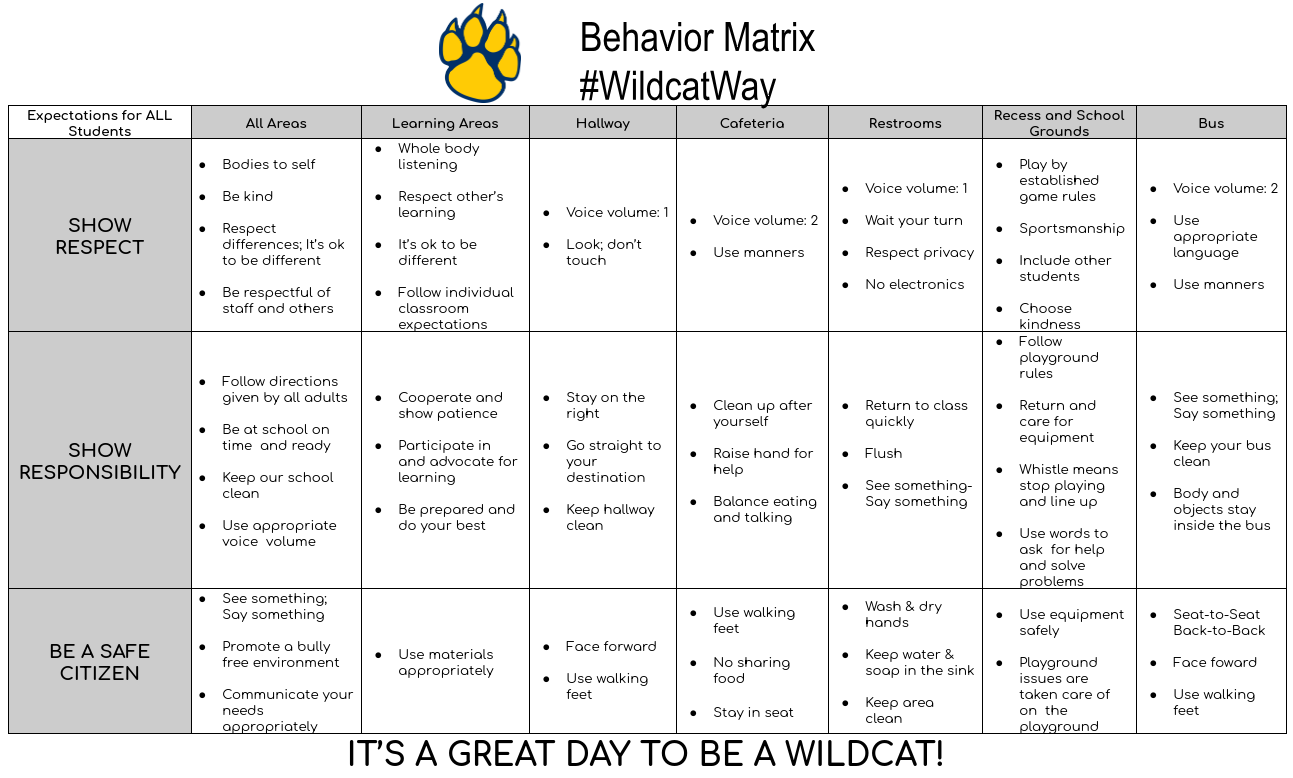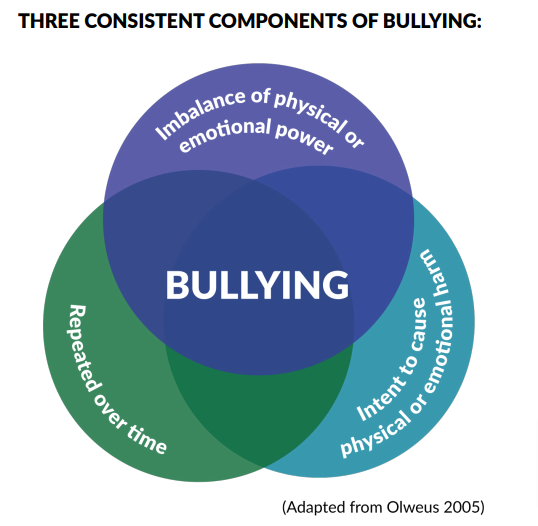|
Student expectations of being respectful, responsible, and safe are fundamental for creating a positive and productive learning environment. These expectations help foster a culture of respect, accountability, and well-being within the school community. Here are some common student expectations associated with each of these values:
Respect:
- Respect for Others: Students are expected to treat all members of the school community (peers, teachers, staff, and visitors) with kindness, empathy, and consideration.
- Respect for Differences: Students should embrace diversity and show respect for individuals from various backgrounds, cultures, and perspectives.
- Respect for Authority: Students are expected to follow school rules, listen to and obey teachers and staff, and accept guidance and correction when necessary.
- Respect for Property: Students should take care of school property, personal belongings, and the belongings of others.
Responsibility:
- Academic Responsibility: Students are expected to actively engage in their learning, complete assignments on time, and seek help when needed.
- Attendance and Punctuality: Students should attend school regularly and arrive on time for classes to maximize their learning opportunities.
- Organization: Students are encouraged to keep their materials organized, including backpacks, lockers, and classwork.
- Homework and Study Habits: Students are responsible for managing their homework and study time effectively to support their academic success.
- Conflict Resolution: When conflicts arise, students are encouraged to use appropriate conflict resolution strategies, such as communication and seeking assistance from adults.
Safety:
- Physical Safety: Students must follow safety rules to prevent accidents and injuries within the school, including using equipment and facilities responsibly.
- Emotional and Mental Well-Being: Students should seek help when they or others are in emotional distress and report any safety concerns to school staff.
- Cyber Safety: In the digital age, students should practice responsible and safe online behavior, including appropriate use of technology and reporting any cyberbullying or unsafe online activities.
Community and Citizenship:
- Community Engagement: Students are encouraged to actively participate in school activities, clubs, and community service to build a sense of belonging and contribute positively to the school community.
- Good Citizenship: Students should understand and uphold the rights and responsibilities of being a member of a larger community, such as following local laws and regulations.
These expectations serve as the foundation for creating a school environment that promotes academic achievement, personal growth, and a sense of belonging. Schools often communicate these expectations through codes of conduct, student handbooks, and character education programs to ensure that students are aware of and understand their role in maintaining a respectful, responsible, and safe learning environment.
|
|

|
|
Bullying is defined as a repeated act with an imbalance of power between the students involved. This includes threats, name-calling, intimidation, inappropriate touching, gestures, symbol display, or verbal or non-verbal or written communication or is racial, or sexual in nature that makes a student feel uncomfortable or unsafe.

There are four main categories of bullying types of behavior:
-
Friendly Teasing: One student comments to another student that he should turn his jersey inside out because his favorite team lost last night.
-
Hurtful Teasing: One student comments to another student that they look chubby in the outfit they are wearing.
-
Peer Conflict: Two students have a disagreement on the playground about which one will be the quarterback in football.
-
Bullying: One student repeatedly threatens another student that if they walk down a specific hallway they will be "beaten up." Another example is one student repeatedly calls another student a name regarding the color of their skin.
|
Friendly Teasing
|
Hurtful Teasing
|
Peer Conflicts
|
Bullying
|
|
Equal power
Neutral
Purpose is to be playful
Joins relationships
Funny to both parties
|
Unequal power
Sensitive topic
Purpose is to upset
Excludes
Sarcastic
|
Equal power
Occurs occasionally
Accidental
Negotiates an option
Withdrawing an option
Relationship is valued
Effort to resolve
|
Imbalance of power
Occurs repeatedly
Intentional and serious
Seeks to gain power
Victim is vulnerable
No remorse
No effort to resolve
|
Report Bullying
-
A student, parent, friend, or teacher can report suspected bullying to a teacher, associate principal, or principal verbally or through email.
-
Administration will conduct a thorough investigation by interviewing parties involved and any bystanders with information to share (friends, teachers, etc.). Records and data will be reviewed as well such as academic records, disciplinary records, camera footage, etc.
-
After the investigation is complete, administration will determine if bullying occurred. If it did, there will be a plan of action established and a follow-up plan designed.

If you are interested in more resources you can visit:
Wisconsin Department of Public Instruction: A Comprehensive Approach to Bullying Prevention
StopBullying.gov
|
|
|
|
|